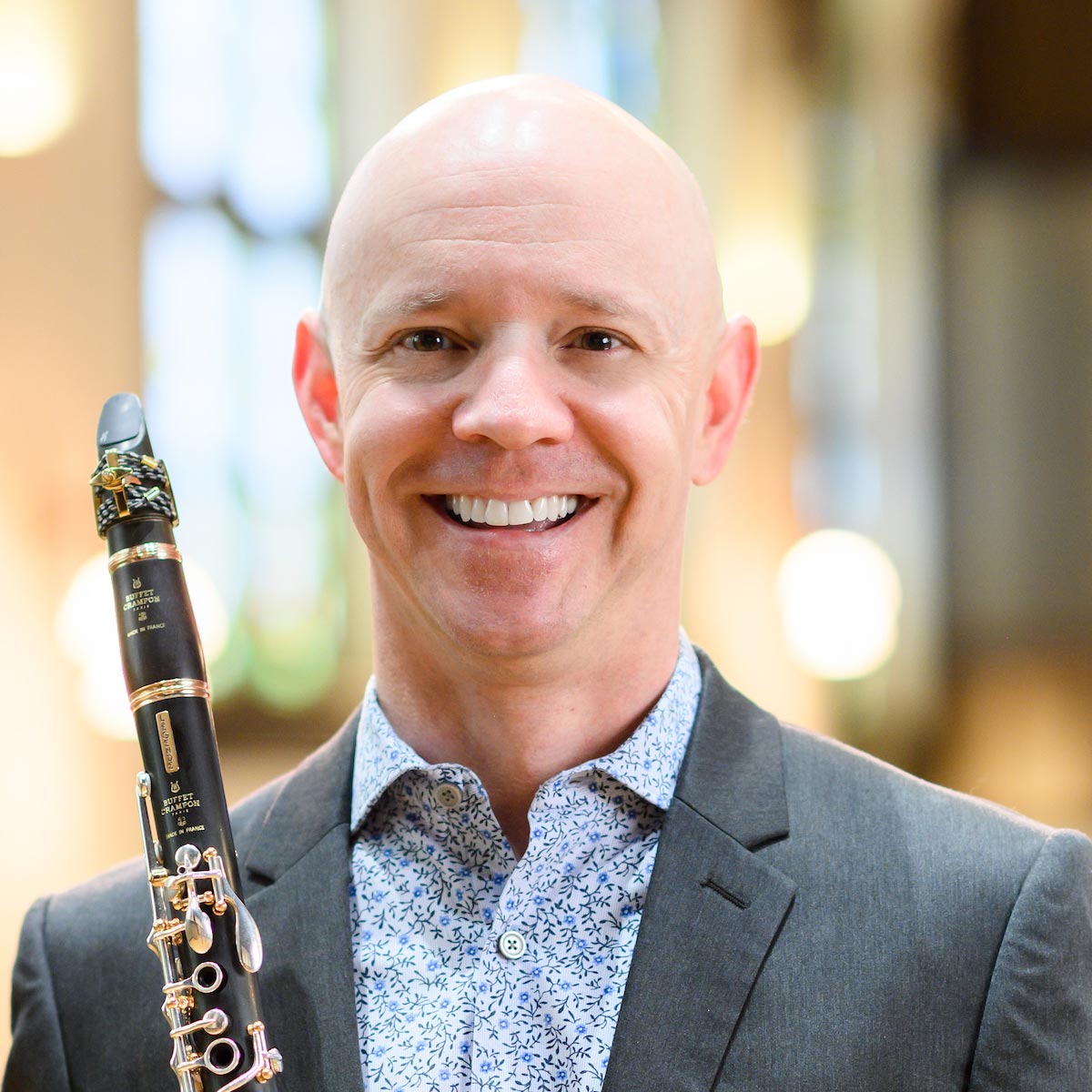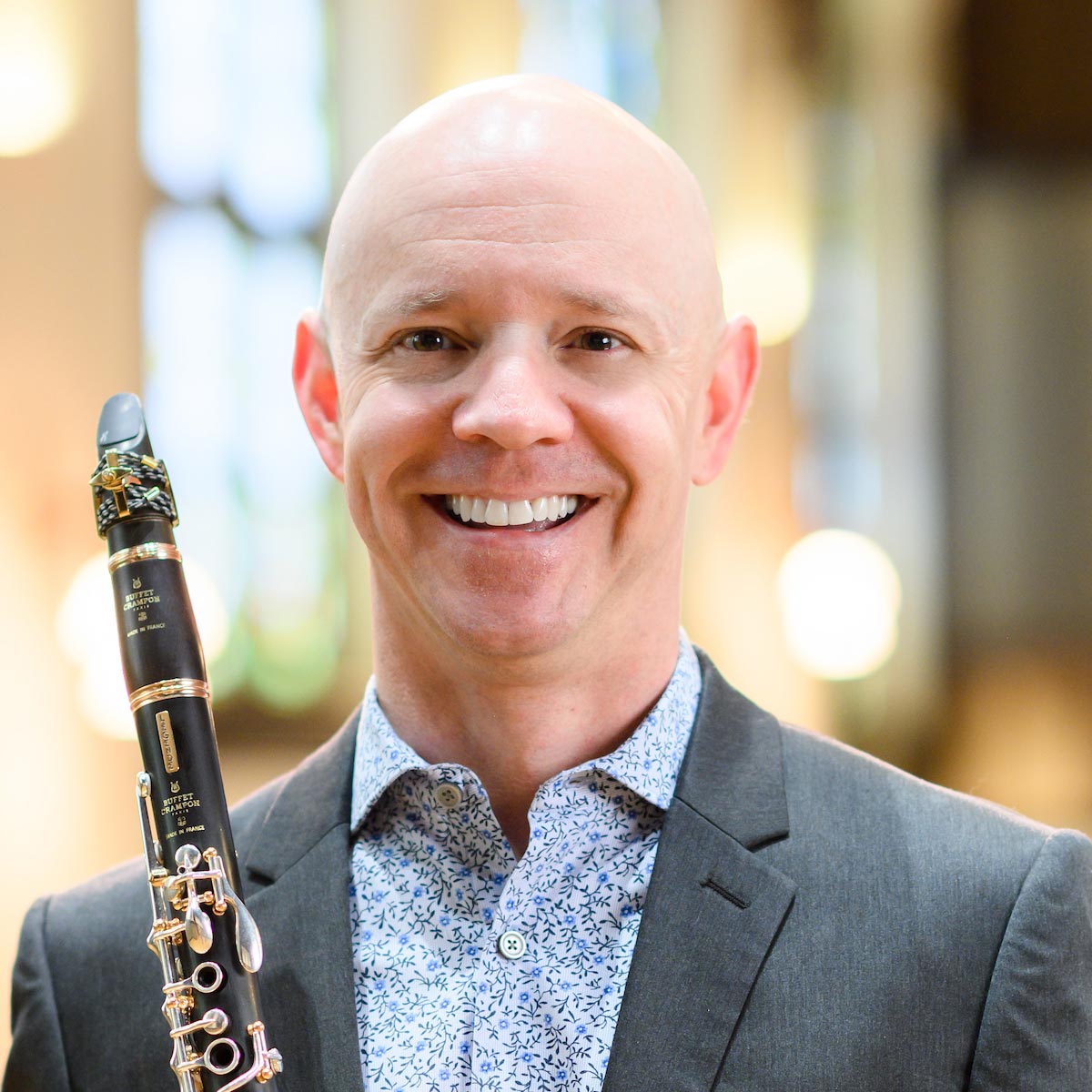Alexander Technique
Alexander Technique is taught by Shawn L. Copeland, Assistant Professor of Clarinet, Certified Teacher of the Alexander Technique, mATI. Please email Professor Copeland to register interest in Alexander Technique lessons.
Hourly tuition for Alexander Technique is $67. The number of lessons will be determined in consultation with the instructor.
The Alexander Technique is a simple and practical way to relieve pain and stress, develop awareness and discover new choices in your responses to life. It is a method that can help you move through your day with freedom of movement, balance, support, flexibility and coordination. Although developed by an actor, this technique is a valued tool for anyone who uses their body—therefore everyone. Practice of the technique refines and heightens kinesthetic sensitivity, offering anyone a control that is fluid and lively rather than rigid. When you take the time to think about how you move, you give yourself the opportunity to perform any task more comfortably, efficiently and with less tension. For musicians, the Alexander Technique can be used as a means to unlock creativity, discover freedom and ease in performance, reduce stress and tension throughout the body, and prevent performance related injuries.
Frederick Matthias Alexander (1869-1955), an actor who began his career as a Shakespearean orator, developed chronic laryngitis while performing. Determined to restore the full use of his voice, he carefully watched himself while speaking, and observed that undue muscular tension accounted for his vocal problem. He sought a way to eliminate that restriction. Over time, he discovered and articulated a principle that profoundly influences health and well-being: when neck tension is reduced, the head no longer compresses the spine and the spine is free to lengthen. Alexander restored his own natural capacity for ease by changing the way he thought while initiating an action. From this work on himself and others, he evolved a hands-on teaching method that encourages all the body's processes to work more efficiently—as an integrated, dynamic whole.
The Alexander Technique has been taught since the early 1900s. Many well-known individuals, such as Paul McCartney, Sting, Robin Williams, Julie Andrews, Judy Dench, Kevin Kline, Paul Newman and Daniel Radcliffe have studied and used the Alexander Technique. Although these are all performers, the Alexander Technique can help anyone. Students generally fall into three categories:
- Those who must use their bodies with maximum ease and flexibility: actors, dancers, singers, athletes and musicians.
- Those whose carriage is bad, uncomfortable or painful, or whose occupations lead them into bad postural habits.
- Those with medical problems who are referred by their physicians because of physical habits that are intensifying their difficulties.
Workshop: Weekly classes for students to participate in group activities designed to enhance instrumental performance by improving freedom of movement, balance, flexibility, coordination and creativity.
Private Lessons: Tailored to the needs of each individual, each lesson commonly contains two parts.
One is the table/chair lesson. In a chair lesson, the individual will move in and out of a chair, observing their movements as the teacher works with them to find freedom and ease in this daily but habitual task. In a table lesson, the student lies clothed on a bodywork table. As the student lies on their back, the teacher gently moves his/her head, neck and limbs, encouraging release and expansion. The student participates by observing him/herself in motion without exertion.
The second is guided activity. The teacher observes and guides the individual in simple activities. This can be playing your instrument, singing, walking, writing, standing up, sitting down or reading. By using their hands and giving simple directions, the teacher helps the individual experience these activities with greater awareness and ease.








